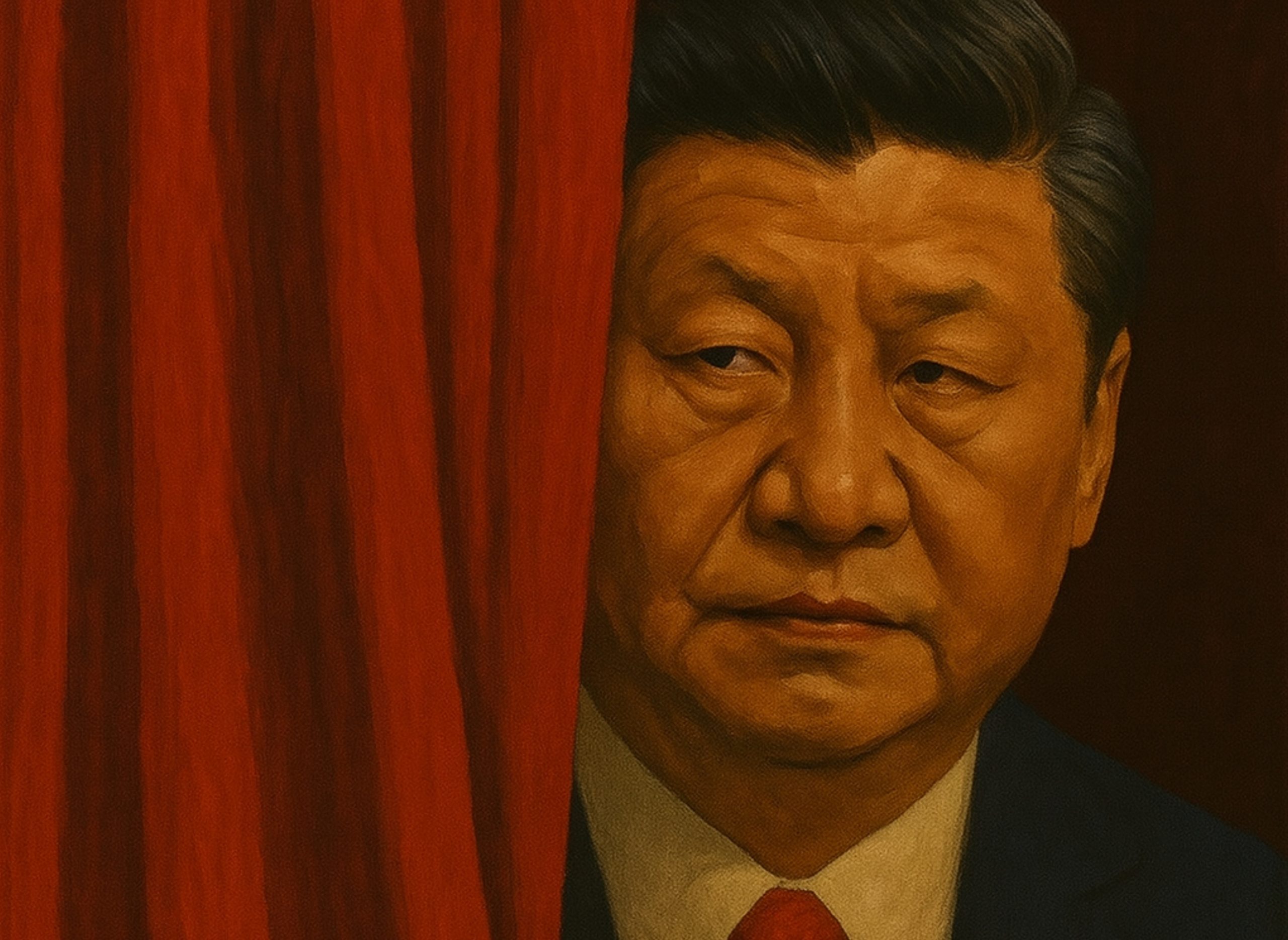
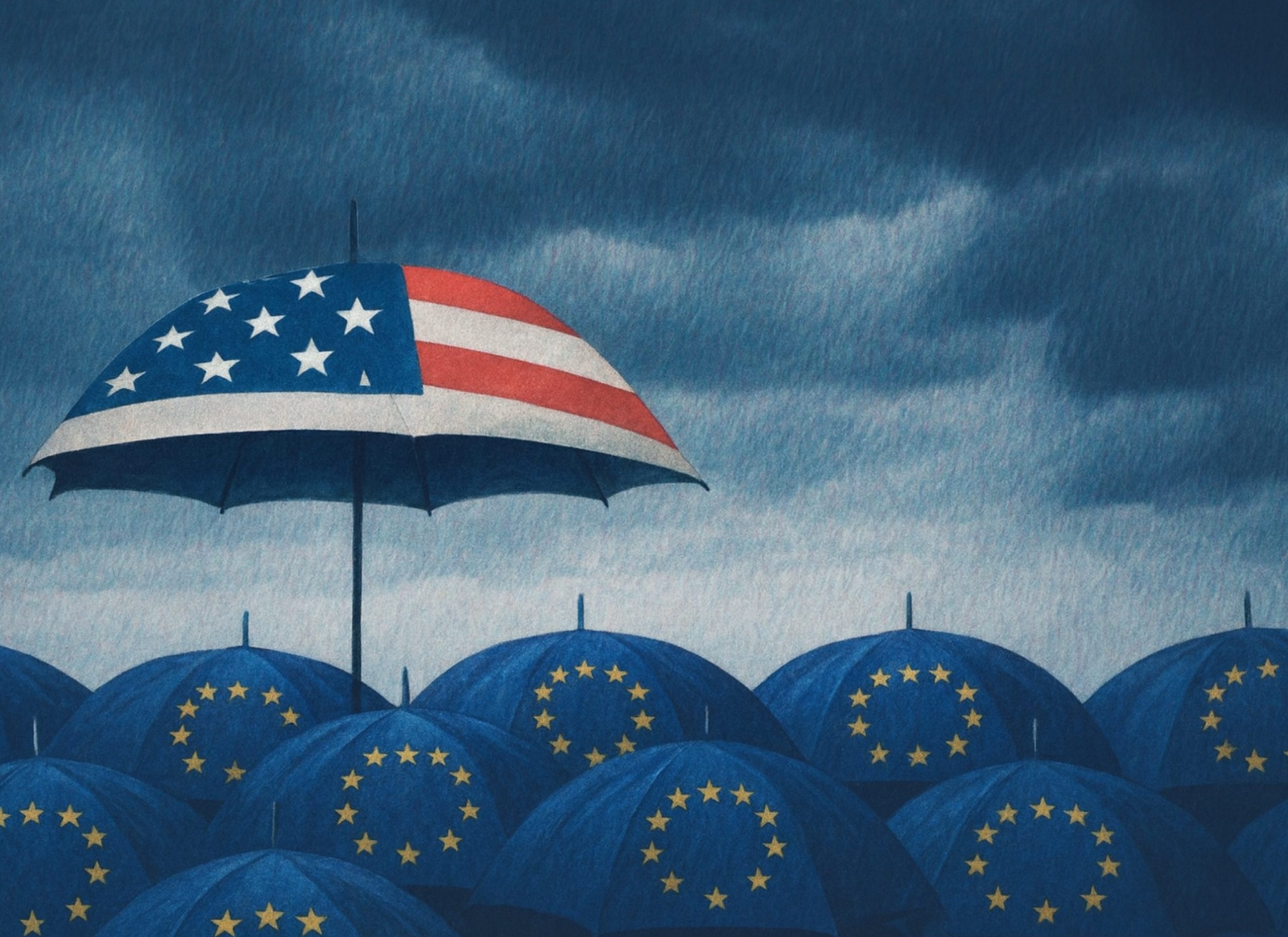
This illustration has been created by AI to use only in this article.
If U.S. security guarantees grow more conditional, Europe faces a harsh trilemma: drifting back into a wary coexistence with Russia, over-hedging on an uneven partnership with China, or finally shouldering the costs of becoming a power in its own right. The urgency is no longer theoretical. Since Russia’s full-scale invasion of Ukraine, European governments have been jolted out of their post-Cold War complacency. Defense outlays and joint planning are at last moving at the EU level rather than remaining the patchwork of national capitals. Brussels’ Readiness 2030 package and recent ECB analyses now treat sustained defense spending as macroeconomic fact, not political posture.
Across the Atlantic, the message is more ambivalent. President Trump has pressed allies to raise defense budgets sharply, while speaking of Article 5 in ways that leave Europe guessing. The June 2025 NATO summit produced a headline pledge: allied spending to reach 5 percent of GDP by 2035—a historic goal, if achieved. Yet the surrounding rhetoric made clear that U.S. backing will hinge increasingly on European burden-sharing and case-by-case judgment. For Europe, the implication is plain: plan for partnership, prepare for contingency.
Europe’s strategic question is no longer abstract: if Washington’s role contracts, what would a credible European path look like? Neither leaning back toward Moscow nor forward into Beijing offers safety or stability. The real test is whether Europe can build a limited autonomy—political, industrial, and military—that deters Russia, de-risks its China ties, and keeps the transatlantic bond alive by choice, not dependence. History explains how the current reliance took shape, and the coming years will test it against shifting U.S. politics and the twin pressures of Russia and China. In the end, a liberal Europe must decide how to stand between two authoritarian giants.
Can Europe Stand Without America?
Since 1949, Europe’s security order has hinged on a simple arrangement: the United States supplied the high-end “enablers” and sat atop NATO’s command pyramid, allowing Europeans to economize on the costliest parts of deterrence. The Supreme Allied Commander Europe—a U.S. general who also leads EUCOM—has long embodied that structure, signaling both American leadership and Europe’s dependence on U.S. nuclear and conventional guarantees.
That leadership extended beyond symbolism. U.S. strategic airlift, aerial refueling, airborne command-and-control, and ISR formed the connective tissue of modern defense. Repeated reviews have flagged these “air-domain enablers” as Europe’s chronic weakness, laid bare in Libya in 2011 and again after 2022. Economically, the Marshall Plan and U.S.-led integration tied recovery to security—a bargain that became another postwar cornerstone.
Europe has chased autonomy before, but rarely at the scale required. The early European Defence Community collapsed in the French Assembly in 1954, ending hopes for a supranational European Army. From de Gaulle’s vision of independence to later rhetorical revivals, the idea seldom translated into capacity. Later frameworks—CFSP, CSDP, and the 2017 PESCO—added legal and budgetary tools for joint projects, yet fragmentation persisted, and the missing “enablers” never arrived fast enough to replace U.S. capabilities.
holds an M.A. in Political Science and European Affairs from James Madison University. His academic specialization lies in comparative governance, international regulation, and global policy design, with a focus on the evolving structures of power and decision-making in a multipolar world.
If U.S. security guarantees grow more conditional, Europe faces a harsh trilemma: drifting back into a wary coexistence with Russia, over-hedging on an uneven partnership with China, or finally shouldering the costs of becoming a power in its own right. The urgency is no longer theoretical. Since Russia’s full-scale invasion of Ukraine, European governments have been jolted out of their post-Cold War complacency. Defense outlays and joint planning are at last moving at the EU level rather than remaining the patchwork of national capitals. Brussels’ Readiness 2030 package and recent ECB analyses now treat sustained defense spending as macroeconomic fact, not political posture.
Across the Atlantic, the message is more ambivalent. President Trump has pressed allies to raise defense budgets sharply, while speaking of Article 5 in ways that leave Europe guessing. The June 2025 NATO summit produced a headline pledge: allied spending to reach 5 percent of GDP by 2035—a historic goal, if achieved. Yet the surrounding rhetoric made clear that U.S. backing will hinge increasingly on European burden-sharing and case-by-case judgment. For Europe, the implication is plain: plan for partnership, prepare for contingency.
Europe’s strategic question is no longer abstract: if Washington’s role contracts, what would a credible European path look like? Neither leaning back toward Moscow nor forward into Beijing offers safety or stability. The real test is whether Europe can build a limited autonomy—political, industrial, and military—that deters Russia, de-risks its China ties, and keeps the transatlantic bond alive by choice, not dependence. History explains how the current reliance took shape, and the coming years will test it against shifting U.S. politics and the twin pressures of Russia and China. In the end, a liberal Europe must decide how to stand between two authoritarian giants.
Can Europe Stand Without America?
Since 1949, Europe’s security order has hinged on a simple arrangement: the United States supplied the high-end “enablers” and sat atop NATO’s command pyramid, allowing Europeans to economize on the costliest parts of deterrence. The Supreme Allied Commander Europe—a U.S. general who also leads EUCOM—has long embodied that structure, signaling both American leadership and Europe’s dependence on U.S. nuclear and conventional guarantees.
That leadership extended beyond symbolism. U.S. strategic airlift, aerial refueling, airborne command-and-control, and ISR formed the connective tissue of modern defense. Repeated reviews have flagged these “air-domain enablers” as Europe’s chronic weakness, laid bare in Libya in 2011 and again after 2022. Economically, the Marshall Plan and U.S.-led integration tied recovery to security—a bargain that became another postwar cornerstone.
Europe has chased autonomy before, but rarely at the scale required. The early European Defence Community collapsed in the French Assembly in 1954, ending hopes for a supranational European Army. From de Gaulle’s vision of independence to later rhetorical revivals, the idea seldom translated into capacity. Later frameworks—CFSP, CSDP, and the 2017 PESCO—added legal and budgetary tools for joint projects, yet fragmentation persisted, and the missing “enablers” never arrived fast enough to replace U.S. capabilities.
holds an M.A. in Political Science and European Affairs from James Madison University. His academic specialization lies in comparative governance, international regulation, and global policy design, with a focus on the evolving structures of power and decision-making in a multipolar world.


How is Xi Jinping’s China Dream transforming global power and order?
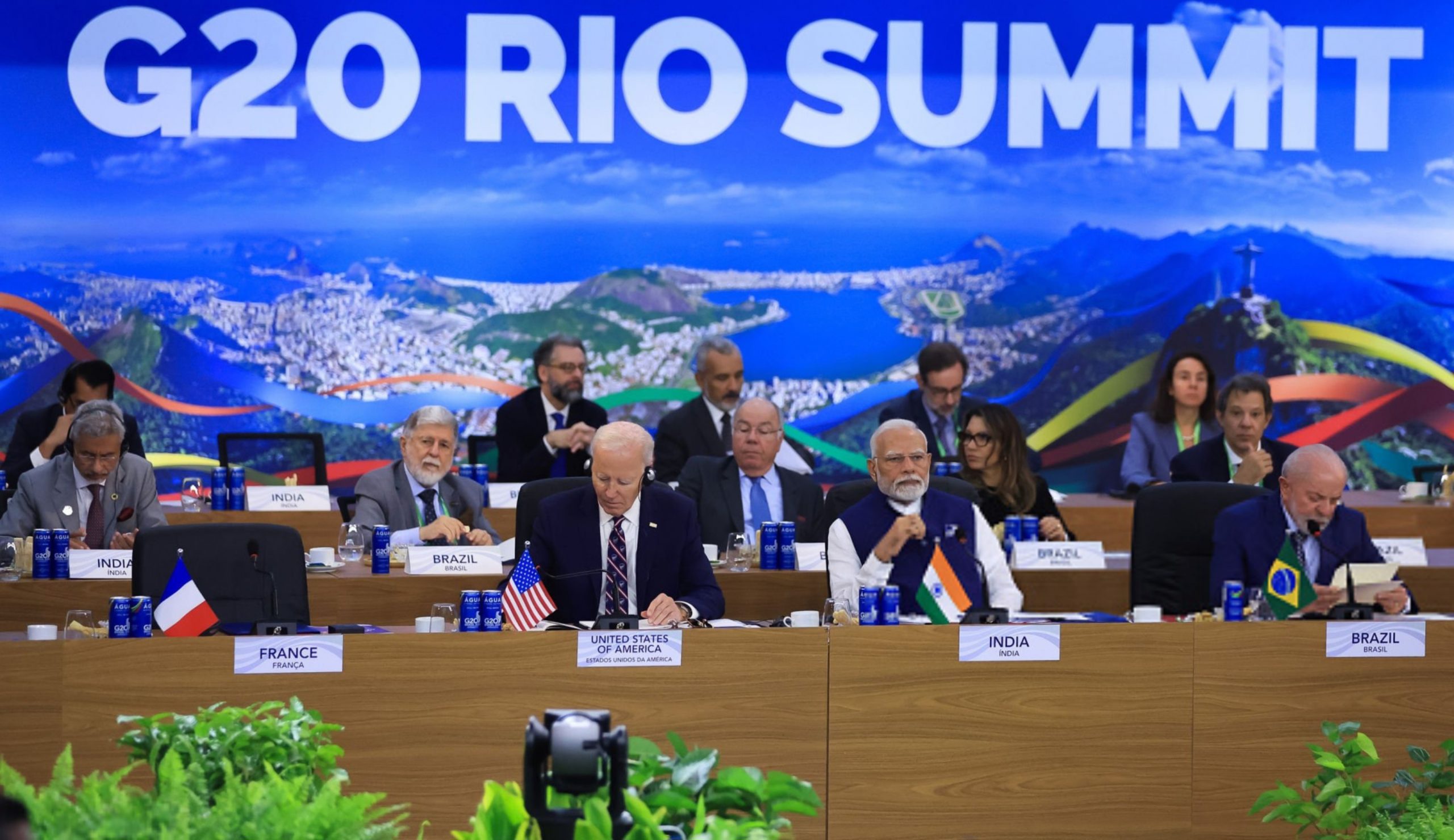
Russia’s full-scale invasion of Ukraine in 2022 forced a reset. Germany’s Zeitenwende launched a €100 billion special fund to rearm the Bundeswehr, coupled with procurement reforms that broke with the post–Cold War complacency. Two once-neutral Nordic nations, Finland and Sweden, joined NATO—turning the Baltic Sea into an allied stronghold and anchoring Europe’s northern flank.
By 2025, Brussels sought to weave these national shifts into a single continental framework. The Commission’s Readiness 2030 package—once branded ReArm Europe—identified seven critical capability areas: air and missile defense, artillery, ammunition, drone and counter-drone systems, military mobility, advanced technologies such as AI, quantum, and cyber, and the strategic enablers that bind them together. Each was to receive EU financing and joint procurement support, meant to scale production and shorten delivery timelines.
Three lessons stand out. Europe’s dependence on U.S. command and enablers is structural, not rhetorical. Earlier autonomy drives built frameworks like PESCO but never replaced the missing toolkit. And the post-2022 pivot—from Zeitenwende to Nordic accession to Readiness 2030—has at last aligned politics, budgets, and planning toward closing that gap.
Conditional Alliance
The Trump administration’s second term has mixed emphatic pledges of NATO support with sharper conditions: louder demands for European “heavy lifting,” exploratory cuts to U.S. forces in Europe in favor of the Indo-Pacific, and tactical pressure over Ukraine aid. By mid-2025, U.S. and NATO officials had floated—and then adopted—a target for allies to spend 5 percent of GDP on defense by 2035, split between 3.5 percent for core defense and 1.5 percent for broader security and resilience. It was framed as the price of keeping U.S. backing credible while redistributing burdens.
Replacing U.S. mass and enablers will demand both money and unity of command. A joint Bruegel-Kiel study estimates that, with a sharply reduced U.S. role, Europe would need roughly €250 billion in extra annual spending—about 1.5 percent of the EU’s GDP—plus 300,000 additional troops and a leap in heavy equipment and enablers to match the combat power Washington now provides. Translating that into force terms means around 1,400 tanks, 2,000 IFVs, 700 artillery systems, a million 155 mm shells for 90 days, and some 2,000 long-range loitering munitions each year. But the authors caution that Europe’s coordination penalty—300,000 troops scattered across 25 to 30 militaries—is nowhere near the effectiveness of 300,000 U.S. soldiers fighting as a single corps with integrated ISR, airlift, and space support.
The macro is manageable; the mechanics are not. Replacing recent U.S. military aid to Ukraine would have cost the EU only about 0.12 percent of its GDP in 2024—small in fiscal terms. By early 2025, Europe had already surpassed the United States in cumulative pledged military aid. Yet the real bottlenecks lie elsewhere: industrial capacity, strategic enablers, and the time needed to field trained formations. That is why the Commission’s 2025 White Paper, Readiness 2030, and ReArm Europe initiatives center on joint procurement and financing tools to compress timelines and scale production.
Russia’s full-scale invasion of Ukraine in 2022 forced a reset. Germany’s Zeitenwende launched a €100 billion special fund to rearm the Bundeswehr, coupled with procurement reforms that broke with the post–Cold War complacency. Two once-neutral Nordic nations, Finland and Sweden, joined NATO—turning the Baltic Sea into an allied stronghold and anchoring Europe’s northern flank.
By 2025, Brussels sought to weave these national shifts into a single continental framework. The Commission’s Readiness 2030 package—once branded ReArm Europe—identified seven critical capability areas: air and missile defense, artillery, ammunition, drone and counter-drone systems, military mobility, advanced technologies such as AI, quantum, and cyber, and the strategic enablers that bind them together. Each was to receive EU financing and joint procurement support, meant to scale production and shorten delivery timelines.
Three lessons stand out. Europe’s dependence on U.S. command and enablers is structural, not rhetorical. Earlier autonomy drives built frameworks like PESCO but never replaced the missing toolkit. And the post-2022 pivot—from Zeitenwende to Nordic accession to Readiness 2030—has at last aligned politics, budgets, and planning toward closing that gap.
Conditional Alliance
The Trump administration’s second term has mixed emphatic pledges of NATO support with sharper conditions: louder demands for European “heavy lifting,” exploratory cuts to U.S. forces in Europe in favor of the Indo-Pacific, and tactical pressure over Ukraine aid. By mid-2025, U.S. and NATO officials had floated—and then adopted—a target for allies to spend 5 percent of GDP on defense by 2035, split between 3.5 percent for core defense and 1.5 percent for broader security and resilience. It was framed as the price of keeping U.S. backing credible while redistributing burdens.
Replacing U.S. mass and enablers will demand both money and unity of command. A joint Bruegel-Kiel study estimates that, with a sharply reduced U.S. role, Europe would need roughly €250 billion in extra annual spending—about 1.5 percent of the EU’s GDP—plus 300,000 additional troops and a leap in heavy equipment and enablers to match the combat power Washington now provides. Translating that into force terms means around 1,400 tanks, 2,000 IFVs, 700 artillery systems, a million 155 mm shells for 90 days, and some 2,000 long-range loitering munitions each year. But the authors caution that Europe’s coordination penalty—300,000 troops scattered across 25 to 30 militaries—is nowhere near the effectiveness of 300,000 U.S. soldiers fighting as a single corps with integrated ISR, airlift, and space support.
The macro is manageable; the mechanics are not. Replacing recent U.S. military aid to Ukraine would have cost the EU only about 0.12 percent of its GDP in 2024—small in fiscal terms. By early 2025, Europe had already surpassed the United States in cumulative pledged military aid. Yet the real bottlenecks lie elsewhere: industrial capacity, strategic enablers, and the time needed to field trained formations. That is why the Commission’s 2025 White Paper, Readiness 2030, and ReArm Europe initiatives center on joint procurement and financing tools to compress timelines and scale production.
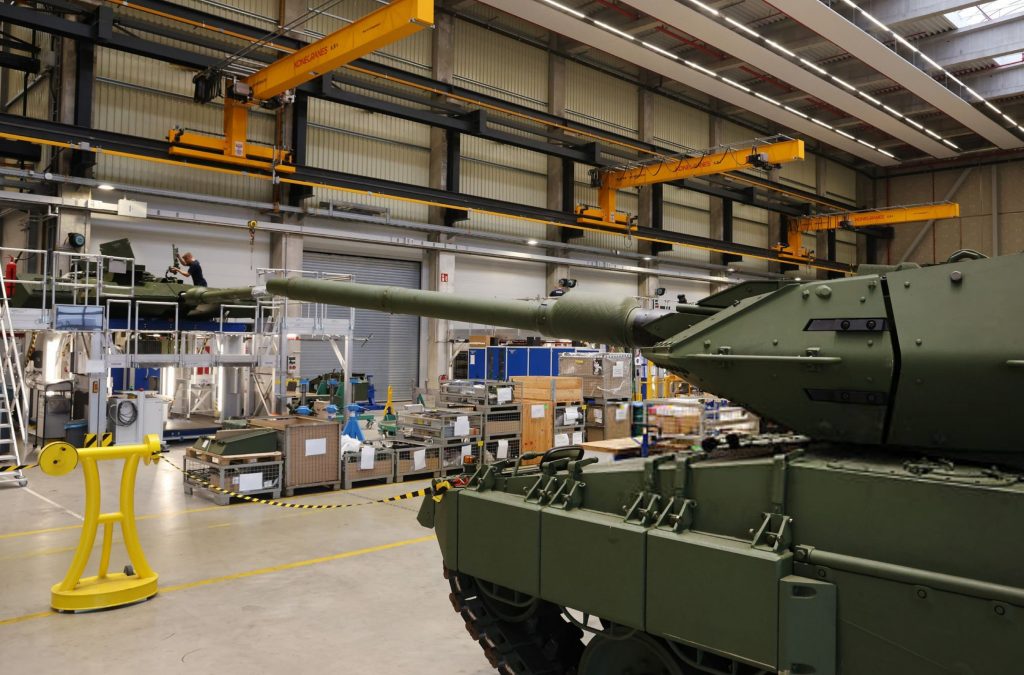
Politically, headline targets do not ensure collective will. Even as governments endorsed the 5-percent framework, some carved out exceptions or slower glide paths—reminders that commitment on paper can outrun delivery in practice. Across markets and ministries, the view is converging: the United States remains part of Europe’s security equation, but as a more transactional, Indo-Pacific-first, and conditional partner than at any point since the Cold War.
Scenario planning should move past the false binary of the United States being “in or out.” The likelier range is thinner support under tighter conditions—a mix that, alongside Russia’s growing capacity and China’s structural weight, leaves Europe no choice but to build its own backbone now. The next sections trace Europe’s autonomy debate, show why leaning toward Moscow is untenable, and argue that managing China through de-risked guardrails must rest on a stronger European pillar—autonomy shaped by design, not drift.
Europe’s Command Test
Europe can replace a narrowing U.S. role only by confronting three linked deficits: missing strategic enablers and command mass, an undersized defense-industrial base, and financing built for crises rather than campaigns. The first is conceptual—who provides ISR, airlift, refueling, missile defense, and command-and-control if Washington “assumes risk in other theaters”? The second is mechanical—how fast can Europe turn cash into brigades, shells, drones, and air-defense layers? The third is political—can EU rules and instruments sustain a years-long surge without breaking fiscal compacts or splintering procurement? As Macron’s idea of “European sovereignty” implies, autonomy depends on capabilities, not declarations.
European forces have long relied on U.S. enablers; even non-NATO missions quietly assumed their presence. Today, signals from Washington—both from President Trump and senior officials—point to fewer American assets dedicated to Europe and potential redeployment of key systems to the Indo-Pacific. That prospect compels Europeans to plan substitutes and reinforce the European pillar of NATO. Expanding European leadership within the NATO Defense Planning Process and rebalancing command responsibilities would be a start.
In practice, this means accelerating the acquisition and integration of air and missile defense, ISR, and lift, while tightening standardization so that 25–30 national forces can operate as one in a crisis. The German-led European Sky Shield Initiative, with joint IRIS-T acquisitions by the Baltic states and others, shows how shared procurement can pool demand and build layered air defenses at speed.
Brussels has shifted from rhetoric to output. Under the Act in Support of Ammunition Production (ASAP), the Commission committed €500 million to expand capacity for explosives, propellants, and shells—enough to reach two million artillery rounds a year by the end of 2025. Thirty-one projects across the supply chain are now under way. Major producers are scaling accordingly: Rheinmetall alone plans to exceed 1.1 million shells annually by 2027, supported in part by EU funds, while missile and testing capacity are also expanding. To cut chronic fragmentation, the EU is subsidizing collective procurement. Through the EDIRPA mechanism, Brussels reimburses member states that place joint orders meeting EU-origin and consortium rules, a move meant to prevent bidding wars and lock in economies of scale.
Europe’s Arsenal Plan
In March 2024, the Commission introduced the first European Defence Industrial Strategy (EDIS) and its companion European Defence Industry Programme (EDIP), giving the ASAP and EDIRPA initiatives a multi-year anchor. EDIP set aside €1.5 billion for 2025–27 and outlined two main targets: sourcing at least 40 percent of defense procurement jointly by 2030 and lifting intra-EU defense trade to 35 percent, backed by a “European preference” in financing. Oversight bodies note that these sums fall short of what is needed—hundreds of billions over a decade—but the framework finally ties money to market design through joint orders, EU-origin rules, and supply-chain incentives.
Europe has a plausible pathway; substitute U.S. enablers with EU–NATO solutions, lock in joint procurement, and finance a sustained industrial surge.
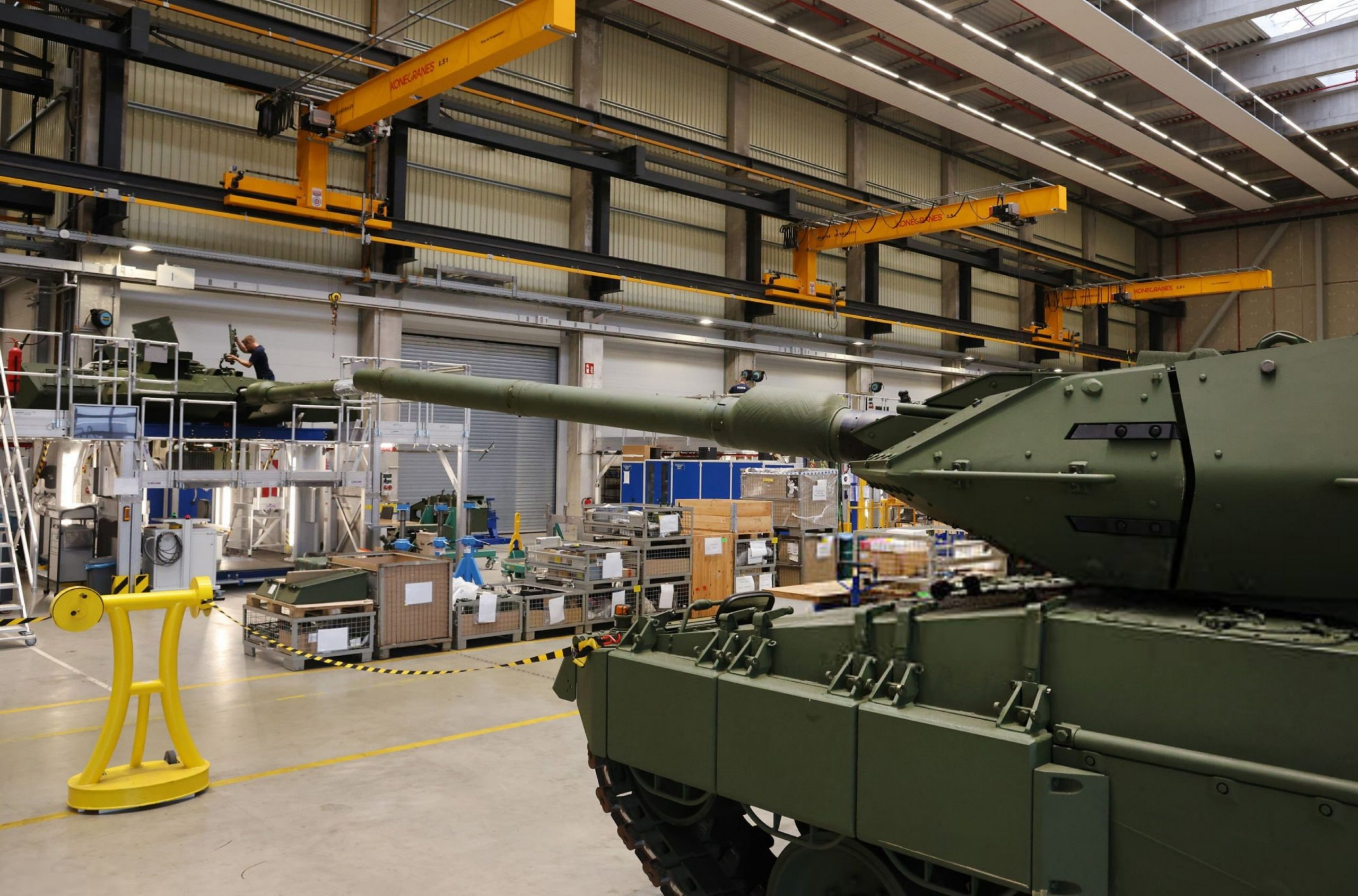
The Commission’s ReArm Europe and Readiness 2030 initiatives link regulatory flexibility with new funding channels: activating Stability and Growth Pact escape clauses for defense spending, proposing a €150 billion EU-level lending instrument, redirecting cohesion funds where relevant, and mobilizing EIB and private capital. EU leaders endorsed this approach at the March 2025 defense summit. The objective is to translate headline budgets into timely deliveries by rewarding scale, speed, and interoperability—avoiding twenty-seven parallel mini-programs. Even under higher spending, Europe will still depend on external suppliers and non-EU technology nodes; de-risking can narrow that exposure, not erase it, which is why standards, intellectual property, and dual-use R&D remain the core leverage points.
A tighter EU–UK security and defence partnership—pursued through spring 2025 and welcomed at the May 2025 EU–UK summit—would broaden Europe’s industrial pool and ease British access to EU-financed joint buys, provided “European preference” rules apply or a formal pact is in force. Industry on both sides says this is essential to avoid duplication and speed delivery.
Europe has a plausible pathway; substitute U.S. enablers with EU-NATO solutions, lock in joint procurement, and finance a sustained industrial surge. The instruments exist—ASAP, EDIRPA, EDIS, Readiness 2030—but success turns on execution: placing large, standardized orders, fixing powder-and-explosives bottlenecks, and integrating UK capacity at a tempo that matches the threat.
No Safe Pivot to Moscow
Some in Europe may be tempted to weigh the costs and benefits of alignment with Moscow, citing energy ties or diplomatic pragmatism. But any sober reading of the post-2022 landscape shows that a tilt toward Russia would be strategically brittle and civically corrosive.
Russia’s war machine is larger, costlier, and still expanding. The Stockholm International Peace Research Institute estimates that Moscow will spend roughly $149 billion on defense in 2024—around 7 percent of its GDP—the sharpest increase since 2015 and with further growth planned through 2027. Ammunition output has surged; private-sector assessments suggest about 4.5 million shells will be produced or refurbished in 2024, supplemented by imports from partners. This is not the profile of a stable neighbor but of a proximate adversary able to sustain pressure on Europe’s borders.
Energy coercion is no longer Moscow’s trump card. After the 2022 shock, Europe cut its dependence on Russian gas sharply: pipeline imports fell from over 150 billion cubic meters in 2021 to less than 52 billion in 2024, and Russia’s overall share—including LNG—dropped below 19 percent. Member states and the Commission are now tightening sanctions, closing loopholes, and accelerating phase-outs. The pattern is structural: Europe can de-risk energy without paying a political price to the Kremlin.
Hybrid pressure, however, has not eased. In July 2025, the EU formally accused Russia of sustained GRU-linked campaigns against member states—ranging from sabotage to cyberattacks and influence operations. Aligning with a government waging such operations inside Europe would erode the Union’s credibility and corrode its civic fabric.
Ukraine now anchors Europe’s forward defense. The surest way to keep Russia from testing NATO and EU lines is to help Kyiv wear down Moscow’s capacity. Since spring 2025, European commitments have surpassed those of the United States, with a growing share coming from new industrial output rather than depleted stockpiles. That shift both sustains Ukraine and strengthens Europe’s own production base—the dual effect strategy demands.
The “Russian option” may promise short-term relief in energy or escalation management, but it fails Europe’s three tests: legitimacy, by rewarding aggression; security, by empowering a revisionist neighbor; and cohesion, by dividing the Union. The only durable course is to keep tightening energy and hybrid resilience, back Ukraine as Europe’s shield, and reinforce the European pillar—without drifting toward accommodation with Moscow.
Reading Beijing, Without Believing It
Interdependence is real—but so are the chokepoints. The Indo-Pacific remains Europe’s most important external trading zone, with roughly 40 percent of EU foreign trade passing through the South China Sea. Any shock around Taiwan would echo through Europe’s economy. That reality makes a deeper commercial pivot toward China tempting for growth but dangerous for resilience when sea-lane security is contested.
From “decouple” to “de-risk.” Since 2023, Brussels has pursued de-risking rather than decoupling—tightening defenses in critical technologies while preserving legitimate trade. Its toolkit now includes the Anti-Coercion Instrument to counter economic pressure, the Chips Act to onshore semiconductor capacity, the Critical Raw Materials Act to diversify inputs, a stronger FDI screening regime under revision, and a proposed outbound-investment review focused on AI, semiconductors, and quantum technologies. Together, these measures set guardrails for engagement—trade without dependency, openness without naivety.
Using trade defense prudently. The EU has moved from rhetoric to enforcement where state-subsidized overcapacity bites. Definitive countervailing duties on Chinese electric vehicles are now in force, with company-specific rates and new probes into construction machinery and other sectors—clear signals of a willingness to act. Beijing’s retaliation, including tariffs on EU pork, highlights the need for coalition-building and supply diversification. Europe’s challenge is to pair sharper trade defense with market-opening diplomacy, avoiding a tit-for-tat spiral that weakens resilience.
Politically, headline targets do not ensure collective will. Even as governments endorsed the 5-percent framework, some carved out exceptions or slower glide paths—reminders that commitment on paper can outrun delivery in practice. Across markets and ministries, the view is converging: the United States remains part of Europe’s security equation, but as a more transactional, Indo-Pacific-first, and conditional partner than at any point since the Cold War.
Scenario planning should move past the false binary of the United States being “in or out.” The likelier range is thinner support under tighter conditions—a mix that, alongside Russia’s growing capacity and China’s structural weight, leaves Europe no choice but to build its own backbone now. The next sections trace Europe’s autonomy debate, show why leaning toward Moscow is untenable, and argue that managing China through de-risked guardrails must rest on a stronger European pillar—autonomy shaped by design, not drift.
Europe’s Command Test
Europe can replace a narrowing U.S. role only by confronting three linked deficits: missing strategic enablers and command mass, an undersized defense-industrial base, and financing built for crises rather than campaigns. The first is conceptual—who provides ISR, airlift, refueling, missile defense, and command-and-control if Washington “assumes risk in other theaters”? The second is mechanical—how fast can Europe turn cash into brigades, shells, drones, and air-defense layers? The third is political—can EU rules and instruments sustain a years-long surge without breaking fiscal compacts or splintering procurement? As Macron’s idea of “European sovereignty” implies, autonomy depends on capabilities, not declarations.
European forces have long relied on U.S. enablers; even non-NATO missions quietly assumed their presence. Today, signals from Washington—both from President Trump and senior officials—point to fewer American assets dedicated to Europe and potential redeployment of key systems to the Indo-Pacific. That prospect compels Europeans to plan substitutes and reinforce the European pillar of NATO. Expanding European leadership within the NATO Defense Planning Process and rebalancing command responsibilities would be a start.
In practice, this means accelerating the acquisition and integration of air and missile defense, ISR, and lift, while tightening standardization so that 25–30 national forces can operate as one in a crisis. The German-led European Sky Shield Initiative, with joint IRIS-T acquisitions by the Baltic states and others, shows how shared procurement can pool demand and build layered air defenses at speed.
Brussels has shifted from rhetoric to output. Under the Act in Support of Ammunition Production (ASAP), the Commission committed €500 million to expand capacity for explosives, propellants, and shells—enough to reach two million artillery rounds a year by the end of 2025. Thirty-one projects across the supply chain are now under way. Major producers are scaling accordingly: Rheinmetall alone plans to exceed 1.1 million shells annually by 2027, supported in part by EU funds, while missile and testing capacity are also expanding. To cut chronic fragmentation, the EU is subsidizing collective procurement. Through the EDIRPA mechanism, Brussels reimburses member states that place joint orders meeting EU-origin and consortium rules, a move meant to prevent bidding wars and lock in economies of scale.
Europe’s Arsenal Plan
In March 2024, the Commission introduced the first European Defence Industrial Strategy (EDIS) and its companion European Defence Industry Programme (EDIP), giving the ASAP and EDIRPA initiatives a multi-year anchor. EDIP set aside €1.5 billion for 2025–27 and outlined two main targets: sourcing at least 40 percent of defense procurement jointly by 2030 and lifting intra-EU defense trade to 35 percent, backed by a “European preference” in financing. Oversight bodies note that these sums fall short of what is needed—hundreds of billions over a decade—but the framework finally ties money to market design through joint orders, EU-origin rules, and supply-chain incentives.
The Commission’s ReArm Europe and Readiness 2030 initiatives link regulatory flexibility with new funding channels: activating Stability and Growth Pact escape clauses for defense spending, proposing a €150 billion EU-level lending instrument, redirecting cohesion funds where relevant, and mobilizing EIB and
private capital. EU leaders endorsed this approach at the March 2025 defense summit. The objective is to translate headline budgets into timely deliveries by rewarding scale, speed, and interoperability—avoiding twenty-seven parallel mini-programs. Even under higher spending, Europe will still depend on external suppliers and non-EU technology nodes; de-risking can narrow that exposure, not erase it, which is why standards, intellectual property, and dual-use R&D remain the core leverage points.
A tighter EU–UK security and defence partnership—pursued through spring 2025 and welcomed at the May 2025 EU–UK summit—would broaden Europe’s industrial pool and ease British access to EU-financed joint buys, provided “European preference” rules apply or a formal pact is in force. Industry on both sides says this is essential to avoid duplication and speed delivery.
Europe has a plausible pathway; substitute U.S. enablers with EU-NATO solutions, lock in joint procurement, and finance a sustained industrial surge. The instruments exist—ASAP, EDIRPA, EDIS, Readiness 2030—but success turns on execution: placing large, standardized orders, fixing powder-and-explosives bottlenecks, and integrating UK capacity at a tempo that matches the threat.
No Safe Pivot to Moscow
Some in Europe may be tempted to weigh the costs and benefits of alignment with Moscow, citing energy ties or diplomatic pragmatism. But any sober reading of the post-2022 landscape shows that a tilt toward Russia would be strategically brittle and civically corrosive.
Russia’s war machine is larger, costlier, and still expanding. The Stockholm International Peace Research Institute estimates that Moscow will spend roughly $149 billion on defense in 2024—around 7 percent of its GDP—the sharpest increase since 2015 and with further growth planned through 2027. Ammunition output has surged; private-sector assessments suggest about 4.5 million shells will be produced or refurbished in 2024, supplemented by imports from partners. This is not the profile of a stable neighbor but of a proximate adversary able to sustain pressure on Europe’s borders.
Energy coercion is no longer Moscow’s trump card. After the 2022 shock, Europe cut its dependence on Russian gas sharply: pipeline imports fell from over 150 billion cubic meters in 2021 to less than 52 billion in 2024, and Russia’s overall share—including LNG—dropped below 19 percent. Member states and the Commission are now tightening sanctions, closing loopholes, and accelerating phase-outs. The pattern is structural: Europe can de-risk energy without paying a political price to the Kremlin.
Hybrid pressure, however, has not eased. In July 2025, the EU formally accused Russia of sustained GRU-linked campaigns against member states—ranging from sabotage to cyberattacks and influence operations. Aligning with a government waging such operations inside Europe would erode the Union’s credibility and corrode its civic fabric.
Ukraine now anchors Europe’s forward defense. The surest way to keep Russia from testing NATO and EU lines is to help Kyiv wear down Moscow’s capacity. Since spring 2025, European commitments have surpassed those of the United States, with a growing share coming from new industrial output rather than depleted stockpiles. That shift both sustains Ukraine and strengthens Europe’s own production base—the dual effect strategy demands.
The “Russian option” may promise short-term relief in energy or escalation management, but it fails Europe’s three tests: legitimacy, by rewarding aggression; security, by empowering a revisionist neighbor; and cohesion, by dividing the Union. The only durable course is to keep tightening energy and hybrid resilience, back Ukraine as Europe’s shield, and reinforce the European pillar—without drifting toward accommodation with Moscow.
Reading Beijing, Without Believing It
Interdependence is real—but so are the chokepoints. The Indo-Pacific remains Europe’s most important external trading zone, with roughly 40 percent of EU foreign trade passing through the South China Sea. Any shock around Taiwan would echo through Europe’s economy. That reality makes a deeper commercial pivot toward China tempting for growth but dangerous for resilience when sea-lane security is contested.
From “decouple” to “de-risk.” Since 2023, Brussels has pursued de-risking rather than decoupling—tightening defenses in critical technologies while preserving legitimate trade. Its toolkit now includes the Anti-Coercion Instrument to counter economic pressure, the Chips Act to onshore semiconductor capacity, the Critical Raw Materials Act to diversify inputs, a stronger FDI screening regime under revision, and a proposed outbound-investment review focused on AI, semiconductors, and quantum technologies. Together, these measures set guardrails for engagement—trade without dependency, openness without naivety.
Using trade defense prudently. The EU has moved from rhetoric to enforcement where state-subsidized overcapacity bites. Definitive countervailing duties on Chinese electric vehicles are now in force, with company-specific rates and new probes into construction machinery and other sectors—clear signals of a willingness to act. Beijing’s retaliation, including tariffs on EU pork, highlights the need for coalition-building and supply diversification. Europe’s challenge is to pair sharper trade defense with market-opening diplomacy, avoiding a tit-for-tat spiral that weakens resilience.
BRI footprints: manage leverage, don’t ignore it. Southern Europe shows how opportunity and exposure intertwine. COSCO’s 67-percent stake in Piraeus cements
long-term influence in a critical hub, while Italy’s 2023 withdrawal from the Belt and Road Initiative proved that a G7 state can recalibrate without cutting trade. The takeaway is simple: screen port and utility concessions rigorously, stress-test continuity plans, and tighten security clauses—while keeping commercial doors open.
Europe should engage China narrowly and under strict guardrails—protecting critical technologies, inputs, and infrastructure while enforcing fair-trade rules, diversifying suppliers and routes, and coordinating with democratic partners. Such engagement complements, rather than replaces, the need for a stronger European pillar in deterrence.
Europe Together—For Now
Europe’s ability to choose—and stay the course—depends on public consent and institutional stability. On the first, support is unusually strong: 81 percent of Europeans back a shared EU defense and security policy, and roughly 80 percent express concern about the bloc’s security over the next five years. That sentiment gives Brussels political space for higher spending and deeper coordination, even if opinions differ on pace and method.
Decision-making is the harder part. Foreign and security policy still operates under Council unanimity, allowing spoilers to stall key moves. Hungary’s veto threats over Ukraine financing and Russia sanctions show the risk, prompting Brussels to rely on workarounds—targeted concessions or legal routes around abstainers. These divisions fall roughly between an Atlanticist bloc (Poland, the Baltics) and more cautious powers (Germany, Hungary), making a single EU script elusive even as coalitions of the willing act faster. Any credible strategy must build on those mechanics—pre-agreed legal frameworks and flexible groupings that prevent paralysis when consensus fails.
Two perimeter anchors matter. The United Kingdom has rejoined Europe’s security core through the emerging EU–UK Security and Defence Partnership, opening channels for joint initiatives, industrial co-investment, and hybrid-threat coordination—without reopening the Brexit trade deal. London now serves as both a capacity multiplier and a political hedge against internal EU fractures.
The Western Balkans remain a pressure point where external actors can probe Europe’s cohesion. NATO’s KFOR mission is still the alliance’s largest deployment. In March 2025, Secretary-General Mark Rutte emphasized that a stable Western Balkans means greater security across the Euro-Atlantic space, urging continued normalization between Belgrade and Pristina while keeping KFOR ready to act. For the EU, strategy there must blend enlargement incentives and mediation with a steady security footprint to reinforce the region’s soft underbelly.
Europe stands together—for now. Political unity has survived crisis after crisis, but its foundation remains procedural quicksand. To keep the project intact, European leaders will have to balance autonomy with alliance, acting through NATO and EU structures while anchoring Britain inside the fold and fortifying the Balkans against external pressure.
From here, three paths emerge. One is a Balanced Europe, steady and pragmatic, cooperating without full alignment. Another is a Divided Europe, where national interests pull the continent apart. The third—a NATO-lite Europe—would see deterrence led from Brussels rather than Washington. Unless Europe builds hard power fast, that last path may be the only one left standing.
A Power of Its Own
Europe’s moment of choice has arrived. A tilt toward Russia would buy a brief calm at the price of lasting insecurity and a quiet corrosion of European norms. A tilt toward China would trade one dependency for another—this time on sea-lanes and semiconductor chains that could be turned off with a switch. The only path that meets the tests of legitimacy, capability, and cohesion is one where Europe builds genuine power of its own while keeping the transatlantic link by choice, not compulsion. A constrained autonomy that can deter Russia, de-risk China, and still move in lockstep with the United States.
This is not a project for poetry but for milestones. Europe must sustain Ukraine as its forward defense, while ramping up arms production through EU mechanisms such as ASAP, EDIRPA, and EDIP—until stocks and timelines match the plans set in Brussels. It must lock in layered air and missile defense through programs like Sky Shield, and build shared ISR and airlift capacity to close allied gaps. Headline budgets must become standardized contracts, backed by fiscal flexibility and EU-level financing so cash turns into brigades and magazines on schedule. On China, engagement should remain narrow and rule-bound: tighten screening, enforce trade defenses, and diversify critical inputs within the de-risking framework. Politically, anchor these steps in coalitions of the willing across the EU and NATO, while treating the new UK-EU security partnership as a lasting force multiplier. With Washington if possible; without it if necessary. That is the course Europe can still defend—for its citizens, and for its history.
With Washington if possible; without it if necessary.
BRI footprints: manage leverage, don’t ignore it. Southern Europe shows how opportunity and exposure intertwine. COSCO’s 67-percent stake in Piraeus cements long-term influence in a critical hub, while Italy’s 2023 withdrawal from the Belt and Road Initiative proved that a G7 state can recalibrate without cutting trade. The takeaway is simple: screen port and utility concessions rigorously, stress-test continuity plans, and tighten security clauses—while keeping commercial doors open.
Europe should engage China narrowly and under strict guardrails—protecting critical technologies, inputs, and infrastructure while enforcing fair-trade rules, diversifying suppliers and routes, and coordinating with democratic partners. Such engagement complements, rather than replaces, the need for a stronger European pillar in deterrence.
Europe Together—For Now
Europe’s ability to choose—and stay the course—depends on public consent and institutional stability. On the first, support is unusually strong: 81 percent of Europeans back a shared EU defense and security policy, and roughly 80 percent express concern about the bloc’s security over the next five years. That sentiment gives Brussels political space for higher spending and deeper coordination, even if opinions differ on pace and method.
Decision-making is the harder part. Foreign and security policy still operates under Council unanimity, allowing spoilers to stall key moves. Hungary’s veto threats over Ukraine financing and Russia sanctions show the risk, prompting Brussels to rely on workarounds—targeted concessions or legal routes around abstainers. These divisions fall roughly between an Atlanticist bloc (Poland, the Baltics) and more cautious powers (Germany, Hungary), making a single EU script elusive even as coalitions of the willing act faster. Any credible strategy must build on those mechanics—pre-agreed legal frameworks and flexible groupings that prevent paralysis when consensus fails.
Two perimeter anchors matter. The United Kingdom has rejoined Europe’s security core through the emerging EU–UK Security and Defence Partnership, opening channels for joint initiatives, industrial co-investment, and hybrid-threat coordination—without reopening the Brexit trade deal. London now serves as both a capacity multiplier and a political hedge against internal EU fractures.
The Western Balkans remain a pressure point where external actors can probe Europe’s cohesion. NATO’s KFOR mission is still the alliance’s largest deployment. In March 2025, Secretary-General Mark Rutte emphasized that a stable Western Balkans means greater security across the Euro-Atlantic space, urging continued normalization between Belgrade and Pristina while keeping KFOR ready to act. For the EU, strategy there must blend enlargement incentives and mediation with a steady security footprint to reinforce the region’s soft underbelly.
Europe stands together—for now. Political unity has survived crisis after crisis, but its foundation remains procedural quicksand. To keep the project intact, European leaders will have to balance autonomy with alliance, acting through NATO and EU structures while anchoring Britain inside the fold and fortifying the Balkans against external pressure.
From here, three paths emerge. One is a Balanced Europe, steady and pragmatic, cooperating without full alignment. Another is a Divided Europe, where national interests pull the continent apart. The third—a NATO-lite Europe—would see deterrence led from Brussels rather than Washington. Unless Europe builds hard power fast, that last path may be the only one left standing.
A Power of Its Own
Europe’s moment of choice has arrived. A tilt toward Russia would buy a brief calm at the price of lasting insecurity and a quiet corrosion of European norms. A tilt toward China would trade one dependency for another—this time on sea-lanes and semiconductor chains that could be turned off with a switch. The only path that meets the tests of legitimacy, capability, and cohesion is one where Europe builds genuine power of its own while keeping the transatlantic link by choice, not compulsion. A constrained autonomy that can deter Russia, de-risk China, and still move in lockstep with the United States.
This is not a project for poetry but for milestones. Europe must sustain Ukraine as its forward defense, while ramping up arms production through EU mechanisms such as ASAP, EDIRPA, and EDIP—until stocks and timelines match the plans set in Brussels. It must lock in layered air and missile defense through programs like Sky Shield, and build shared ISR and airlift capacity to close allied gaps. Headline budgets must become standardized contracts, backed by fiscal flexibility and EU-level financing so cash turns into brigades and magazines on schedule. On China, engagement should remain narrow and rule-bound: tighten screening, enforce trade defenses, and diversify critical inputs within the de-risking framework. Politically, anchor these steps in coalitions of the willing across the EU and NATO, while treating the new UK-EU security partnership as a lasting force multiplier. With Washington if possible; without it if necessary. That is the course Europe can still defend—for its citizens, and for its history.
Recommended

How the War in Ukraine Redefined Europe?
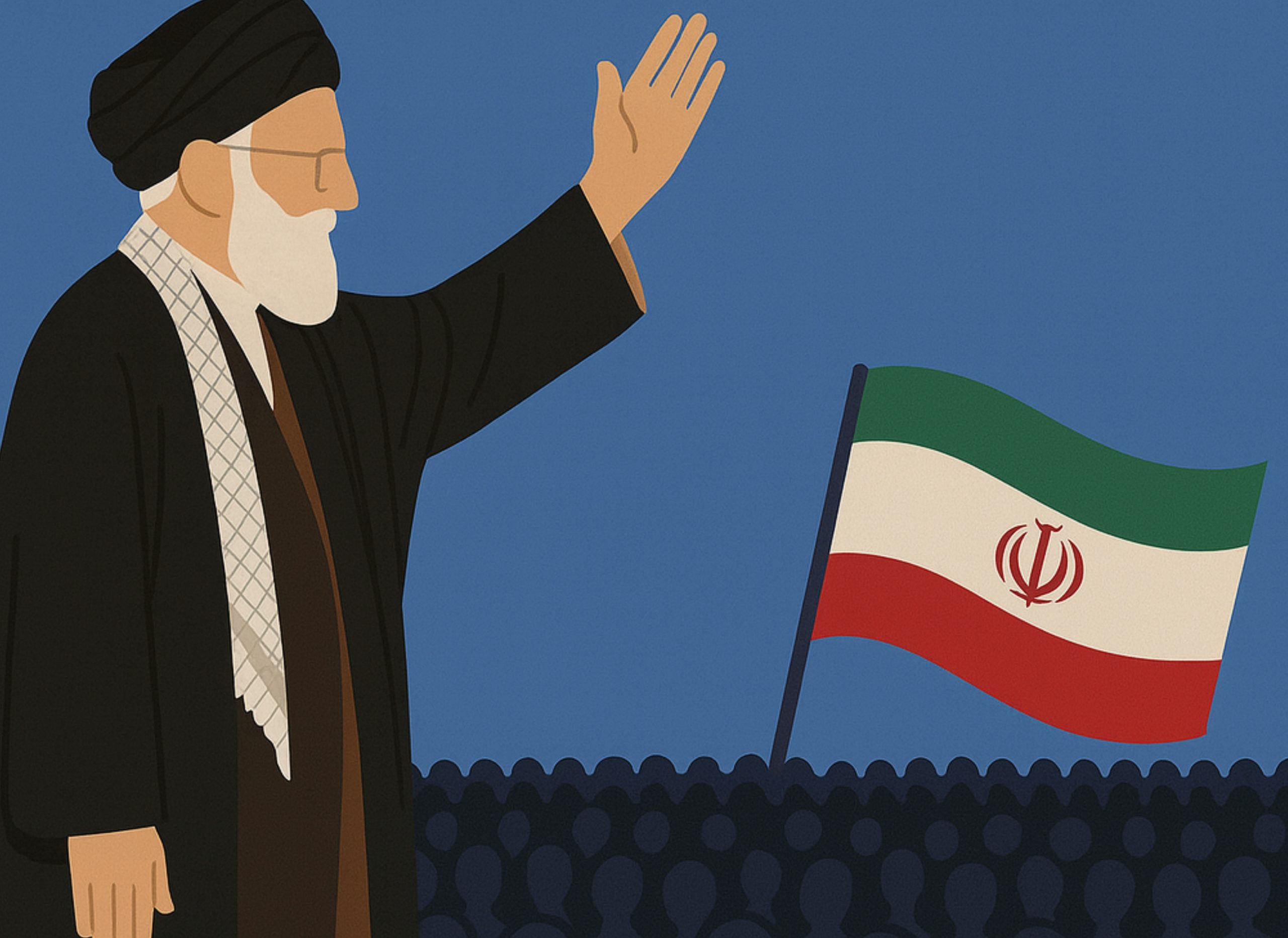
The Last Ayatollah

Or will internal and external challenges halt its ambitions?
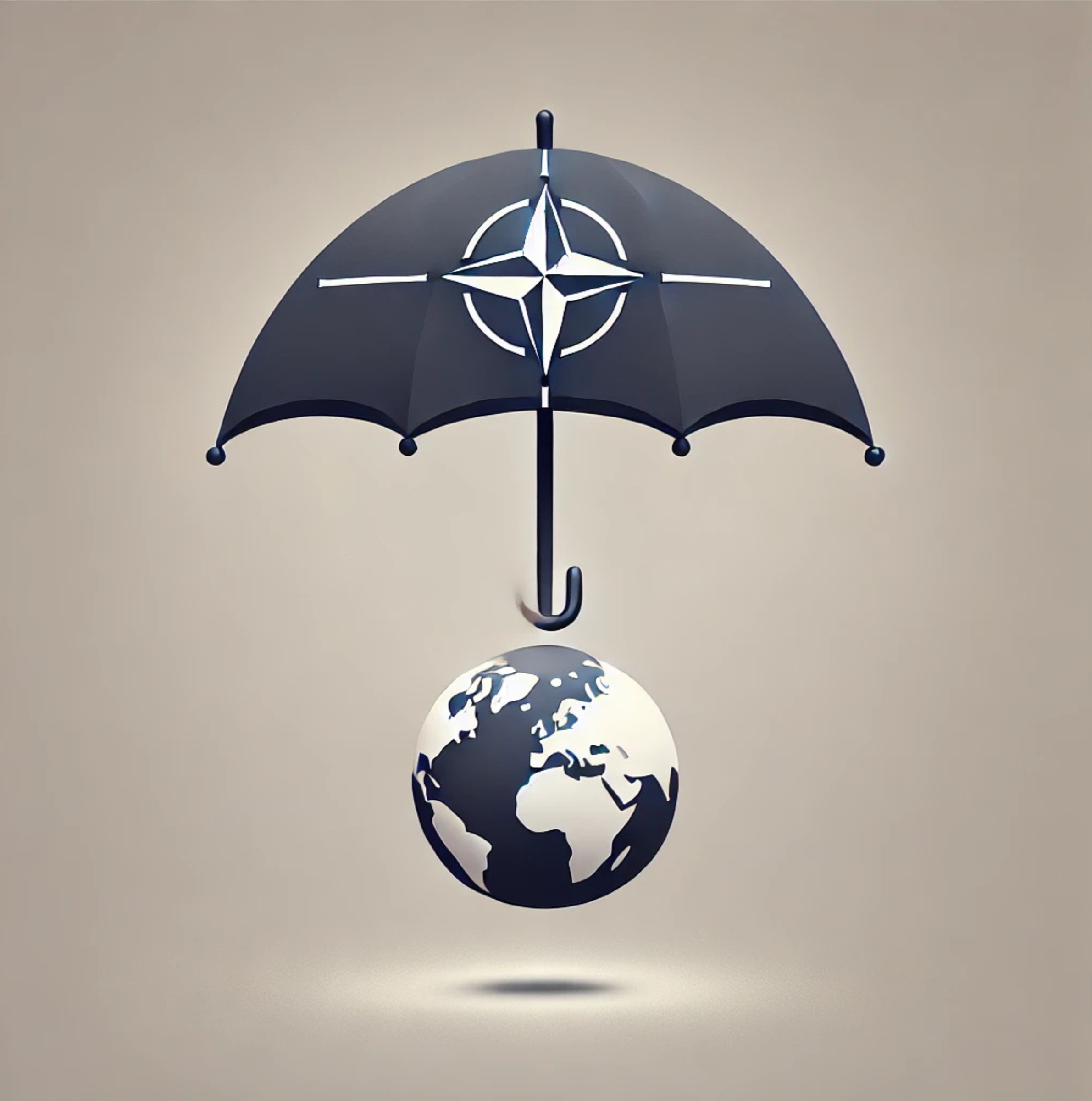
The Alliance’s Search for a New Identity
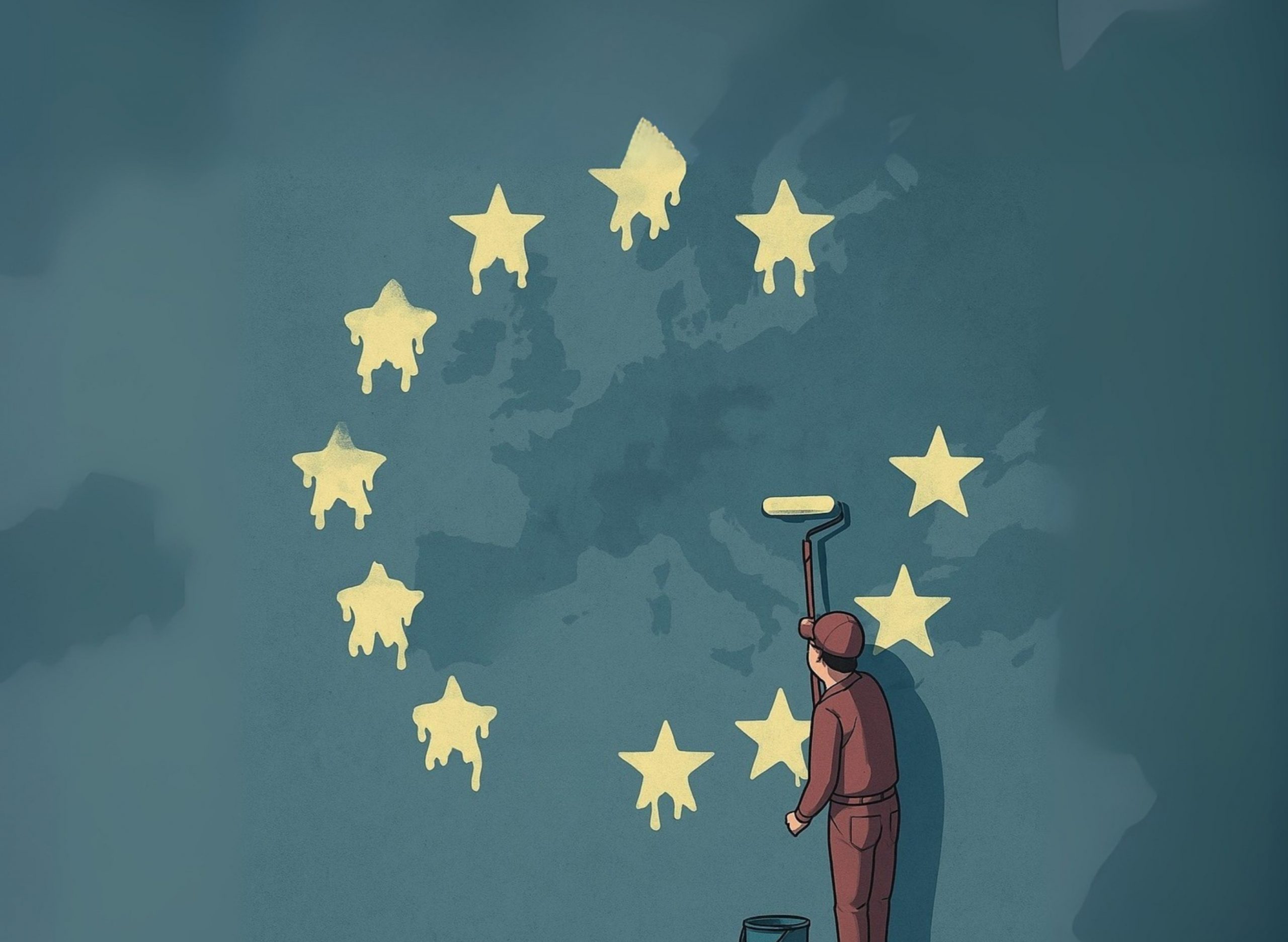
Is a Common European Identity Still Possible?
